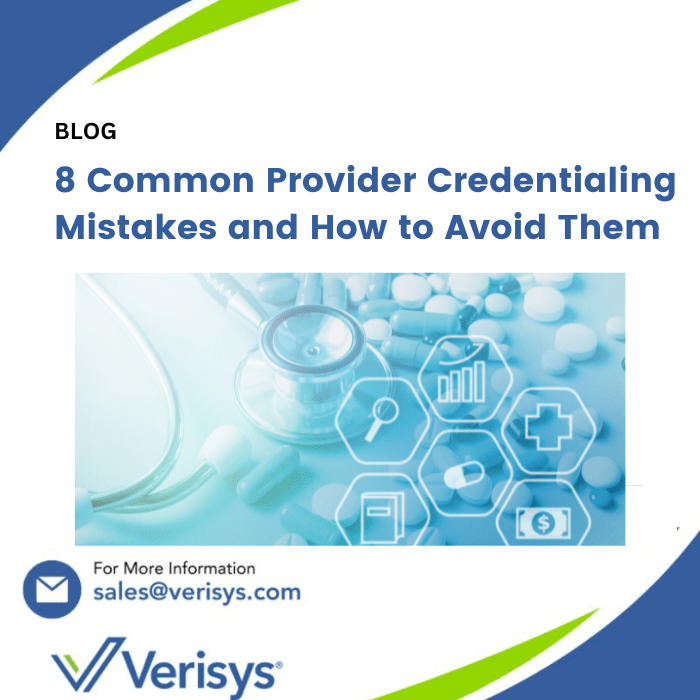– The best resource for monthly healthcare regulatory compliance updates. Compliance Updates: April 2024 Overlook: Licensure Compacts Other Legislation Board Updates Interstate Medical...


Have you ever considered the possible downstream effects of an inadequate credentialing and privileging process? In a frequently cited negligent credentialing case, an Illinois jury awarded the plaintiff nearly 8 million dollars when their foot had to be amputated due to damage caused by the operating physician. It turns out that the operating physician didn’t meet the credentialing requirements, as outlined by the hospital’s bylaws, for the level of surgical privileges granted upon hire and reappointment.
Provider credentialing may seem like a tedious administrative task, but poor execution can result in serious consequences, as seen in the case above. Credentialing mistakes can lead to the following:
In addition, credentialing lapses or deviating from credentialing best practices puts an organization at risk for negligence claims and accreditation problems.
To mitigate risk to your organization, avoid these eight common credentialing mistakes made by the practitioner or the facilities that credential them.
Physician credentialing, also known as medical or provider credentialing, is a laborious process requiring precision, attention to detail, and patience. An organization must verify all certifications and licenses for every provider who administers patient services. Depending on an organization’s size, some may verify the employment histories and qualifications of hundreds or thousands of providers.
Properly credentialing every individual is an enormous amount of work for a team. Hospitals or health systems may not allocate adequate resources or staff to complete the medical credentialing process. This can result in lost revenue due to a delay in credentialing as well as stressed, overworked staff who are more likely to make mistakes.
The average provider enrollment application requires an overwhelming amount of information and data. Failing to complete the entire application accurately or accepting an incomplete one may cause reimbursement delays due to the denial of claims.
Courts have held hospitals liable when a physician falsifies credentials, and the hospital fails to do its due diligence in verifying them.
In one of the earliest negligent credentialing cases, a Wisconsin hospital was eager to book surgical cases and failed to properly verify a surgeon’s credentials. Unfortunately, the surgeon provided false information on the application, and the hospital’s failure to detect it led to patient harm when hip surgery went awry.
Healthcare practitioners need to renew their licenses and credentials on a regular basis, according to federal and state laws.
Initial credentialing and re-credentialing help ensure that healthcare providers are current with their board certifications and licenses. When a hospital fails to stay on top of re-credentialing, it can lead to healthcare providers and facilities performing services they’re not certified or licensed to perform. This creates the potential for adverse patient outcomes, leading to expensive malpractice lawsuits.
Failing to disclose an adverse action is a serious oversight by any provider. However, it is also the responsibility of a healthcare organization to conduct screenings for prior disciplinary actions with a thorough background check.
Hospitals and healthcare organizations must verify credentials against various databases such as exclusion, sanction, and debarment lists. Using a trusted source that pulls data from primary sources is essential.
The Office of Inspector General (OIG) exclusion list is one such source to screen against. However, an even better source is an aggregated dataset such as Verisys’ FACIS (Fraud Abuse Control Information System). FACIS pulls data from over 5,600 primary state and federal sources, providing a comprehensive search.
Similar to mistake number 5, providers are required to report adverse actions, such as:
Hospitals and health systems are accountable for a provider’s omission. Therefore, due diligence requires background checks to identify current and historical adverse actions.
Providers and organizations that fail to report negative actions to the NPDB withhold critical information other organizations need to complete medical credentialing. The NPDB requires reporting of the following actions:
Information provided in a peer review or investigation should be taken seriously and evaluated as part of the credentialing process. Peer references can shed light on the capabilities and competencies of a provider that you cannot glean from simply checking education, training, or license status.
Although provider credentialing may be tedious, the process safeguards healthcare facilities against risk and non-compliance. Thorough and ongoing provider screening is critical to avoid costly negligent credentialing and malpractice claims.
Rushing this process leads to the risk of missing information, errors, and delays in reimbursement. As healthcare regulations evolve and credentialing requirements become more complex, healthcare organizations must update their processes. Proactively updating your credentialing procedures helps avoid credentialing mistakes that put patients and your organization at risk.
Verisys makes credentialing easy, helping your organization maintain compliance and mitigate risk. Contact us to learn more.